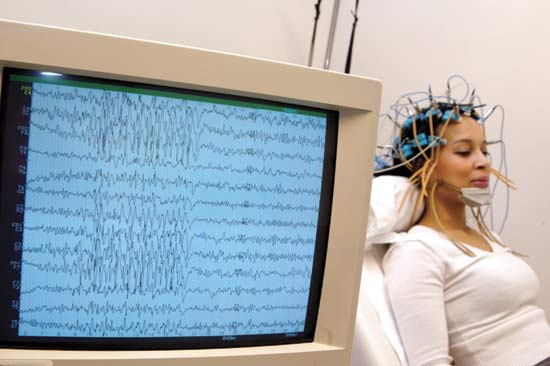Methods
Summary

80 adolescents aged 9-16 years will be recruited from multiple sources to maximize variation in cognitive disorganization symptoms (measure described below). Recruitment and baseline assessments will be completed in years 1-3. Imaging will be conducted only at baseline, while 12 and 24 month follow-up evaluations during years 2-5 will consist of clinical, neurocognitive, and EEG measures. At each time point, participants will undergo clinical, neurocognitive and EEG testing.

Severity of CD will be measured at each time point through symptoms described below in detail. We will characterize the WMC construct by measuring neural activation and circuitry (fMRI), physiology (ERP and EEG), and behavior during an N-Back WM paradigm, and by using neurocognitive measures of WMC. To characterize the

ASR construct, we will measure neural activation of circuitry involved in regulating stress response and recovery, as well as physiological, molecular, behavioral, and self-report measures of HPA and ANS activity. Gonadal hormones (estrogen, testosterone, LH, and FSH) and Tanner puberty stage will be assessed at each time point to explore the effects of pubertal endocrine-mediated changes on stress regulation and CD
Challenges
- Attrition in the longitudinal phase: Our research team has extensive experience with longitudinal studies, and has devised successful strategies for retaining subjects, including having a driver on staff to transport children and their parents to and from the study sessions. To reduce burden on participants and meet budgetary limitations, we will acquire only behavioral and electrophysiological data at the follow-up timepoints.
- Reducing the seemingly large number of variables and measures: As described in the statistics plan, data reduction will be accomplished by creating composite measures and conducting multiple regression analyses
- Conducting imaging with young adolescents may be a challenge. We have extensive experience with this age group through the UNC Conte high-risk study, and our broader experience with developmental neuroimaging of clinical and high-risk populations (including children with autism and developmental disabilities).
- Data loss or corruption during the resting scans due to micro movements: Methods for “data scrubbing” are part of our image analysis pipeline, especially for studies of patient populations and children.
Protocols
This project has not yet shared any protocols.